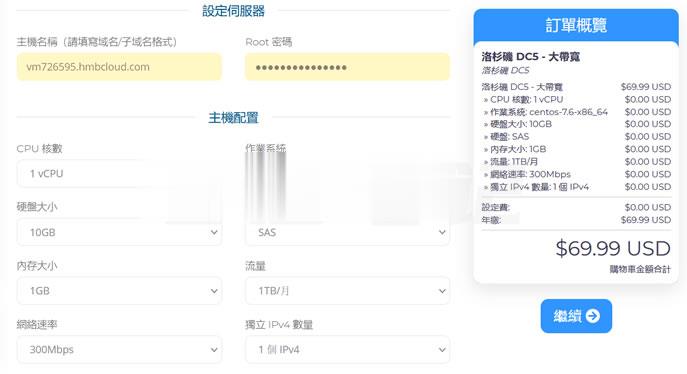systemsboot.wim
TechnicalwhitepaperHPWorkstation:IntelRapidStorageTechnology(RST)remappingofPCIestoragedevicesTechnicalwhitepaper|HPWorkstation:IntelRapidStorageTechnology(RST)remappingofPCIestoragedevices2Tableofcontents2RemappingaPCIestoragedevice2Systemrequirements3Remappingconsiderations5CreatingRAIDvolumesonPCIeNVMeSSDs8OSinstallation10Frequentlyaskedquestions11Resources11AppendixThespecificHPWorkstationswiththeIntelC236chipsetorlatercontainremappinghardwareinthechipset.
ThisallowsaPCIestoragedeviceconnectedtothePlatformControllerHub(PCH)toappeartotheOSasifitwereconnectedonanextraportonthechipset'sinternalSATARAIDcontroller.
RemappingaPCIestoragedeviceEnablingremappingletsyoumanagethestoragedeviceswithintheIntelRapidStorageTechnology(RST)softwareframeworkandprovidesRAIDingcapabilityforPCIestoragedevices.
ItistheonlymechanismavailabletodaytocreateRAIDedbootablePCIestoragedevices.
NOTE:RemappingrequiresspecificBIOSsettings.
ChangingthestateofaprerequisitesettingtoonethatisnotcompatiblewithremappingwilldisableremappingandresultinlossofRAIDvolumesmanagedbyIntelRST.
Ifyouaccidentallydisableremapping,changethesettingsbacktore-enableremappingbeforeattemptingtoboottotheOS.
HPrecommendsbackingupyourdataandOSbeforechanginganysettings.
WhyremapaPCIestoragedeviceTheprimaryreasonforremappingPCIestoragedevicesistocreateabootableRAIDvolumethatcanbemanagedbyIntelRST.
IfyoudonotintendtobootfromaPCIestorageRAIDvolume,youdonotneedtoenableremapping.
InMicrosoftWindows,youcancreatenon-bootablePCIestoragesoftwareRAIDvolumesusingtheWindowsDiskManagementapplet.
HowdoesPCIeRSTremappingworkBeforeremappingisenabled,PCIestoragedevicesthatcontainacontrollerappearinWindowsDeviceManagerasseparatestoragecontrollers.
Afterremappingisenabled,theyarehiddenfromtheOSandappearasiftheyareconnectedtotheSATARAIDcontroller.
BeforeenablingremappingAfterenablingremappingPCIestoragedevicescanbeRAIDedbyIntelRSTusingtheBIOSthird-partyoptionROMmanagementmenu,theIntelUEFIRAIDconfigurationutility(RCfgSata.
efi)fromwithintheUEFIshell,theIntelOScommandlineutility(rstcli64.
exe),orIntelRSTgraphicaluserinterface(GUI),orIntelOptaneMemoryandStorageManagementApp(Win10and17.
9.
xafterwarddriverversion)intheOS.
Theutilitiesareavailablefromhp.
comaspartoftheIntelRSTutility/driverpackageforyourplatform.
SystemrequirementsHardwareSpecificIntelChipset,RefertoSupportedHPWorkstationPCIeNVMestoragedeviceconnectedtoaPCIeslotorM.
2slotonthePCHNOTE:AlldevicesusedinRAIDvolumesmusthavethesamecontrollertype.
Forexample,alldevicesmustbedisplayedindevicemanagerasNVMestoragedevicespriortoenablingremapping.
Abestpracticeistousedevicesfromthesamemanufacturerwiththesamemodelnumberandcapacity.
OtherPCIestoragedevices,suchasM.
2PCIeAHCIdevices,mayberecognizedthroughremapping,butcombiningNVMeandAHCIdevicesinaRAIDvolumeisnotpermittedbyIntelRST.
SupportedOSsWindows10x64UEFIinstallWindows7x64UEFIinstallNOTE:Windows7doesnothavenativesupportforNVMe,IntelUSB3.
0eXtensibleHostController,orIntelRSTremapping,soaspecialprocessisneededtoinjectandloaddriversduringinstallation.
SeeAppendixformoreinformation.
Technicalwhitepaper|HPWorkstation:IntelRapidStorageTechnology(RST)remappingofPCIestoragedevices3DriversIntelRSTdriver15.
9.
8.
1050ornewer(relatedtotheHPworkstationplatform).
Youcandownloadappropriatedriverversionsandtoolsforyourplatformfromhp.
com.
YoumustbeinRAIDmodetocheckthedriverversion.
UsingtheWindowsDeviceManagerapplet,openDeviceManagerandnavigatedowntoStoragecontrollers.
ExpandtheStoragecontrollercategoryandrightclickontheIntelChipsetSATARAIDControllerorIntelChipsetSATA/PCIeRSTPremiumController.
SelectProperties.
ThedriverversionwilldisplayontheDrivertab.
YoucanalsocheckthedriverversionthroughtheIntelRSTGUI.
LaunchtheGUIfromthestartmenu,clickonthehelpbuttonatthetopofthewindow,andfromthehelpwindowthatlaunches,selectSystemReport.
ThedriverversionwilldisplayundertheIntelRSTcategory.
Moreover,youcanalsocheckthedriverversionthroughtheIntelOptaneMemoryandStorageManagementApp.
LaunchtheAppfromthestartmenu,clickontheAboutbuttonattheleftofthewindow.
Thedriverversionwilldisplayinthewindow.
BIOSsettingsPrerequisites(requiredbeforeremappingcanbeenabled)–RAIDmodeset(ConfigureStorageControllerforRAIDchecked)–OptionROMLaunchPolicySettoAllUEFIorAllUEFIExceptVideoNOTE:OptionROMLaunchPolicysettoAllLegacyisnotsupportedRemappingspecific(Availableonlyafterprerequisiteshavebeenset)–RemappingenabledSupportedHPWorkstationsHPZ1G3(2xM.
2PCIeNVMemodules)HPZ240TWR(1-PCIeNVMedeviceinSlot3,1-M.
2PCIeNVMemodule)HPZ240SFF(1-PCIeNVMedeviceinSlot4,1-M.
2PCIeNVMemodule)HPZ2G4TWR/SFF(2-M.
2PCIeNVMemodule)HPZ2G5TWR/SFF/MINI(2–M.
2PCIeNVMemodule)UnsupporteddevicesPCIestoragedevicesconnectedtoCPUslotsorPCHslotsthatdonotsupportremappingM.
2PCIeAHCIstoragedevicesPCIestoragedevicesthatarenotNVMecompliantRAIDwithofmixedstoragedevicetypesUnsupportedOSs32-bitOSsLinux(Kerneldriversdonothavesupportforremapping)RemappingconsiderationsBeforeyouenableremapping,decideifyouwanttokeepyourexistingOS,replaceyourOS,ormigrateyourOStoRAID.
Thefollowingrulesmayhelpyoumakethisdecision.
1.
RemappingisnecessaryonlyifyouwanttobootfromRAIDedPCIeNVMestoragedevicesconnectedtothePCH,orifyouwanttomanageaPCIeNVMedataRAIDwithIntelRST.
IfyouhaveaUEFIbootableOSonasinglePCIeNVMedevice,youcanmigratetheOSduringRAIDcreationtopreserveyourexistingOS.
2.
RemappingrequiresUEFIOptionROMlaunchpolicy,sotheOSmustbeUEFIbootable.
3.
RAIDmustbesetuponlikecontrollers.
APCIeNVMeSSDmustbeRAIDedwithanotherPCIeNVMeSSD.
ASATAdrivemustbeRAIDedwithanotherSATAdrive.
Whenremappingisenabled,BIOSmayincorrectlyidentifyPCIeNVMedevicesasSATAHDDs.
RemappedPCIeNVMedevicesthatareidentifiedasSATAHDDsinBIOScannotbeRAIDedwithanySATAdrive.
4.
RemappingisonlysupportedonPCIeslotsorM.
2socketsconnectedtothePCH.
RemappingprovidesbenefitsonlywhenyouhavemorethanoneNVMedeviceconnectedtothePCH.
5.
DevicesconnectedtoSATAportsarenotimpactedbyremapping.
IfyourOSonSATAisUEFIbootable,youcankeeptheexistingOSonSATA.
Technicalwhitepaper|HPWorkstation:IntelRapidStorageTechnology(RST)remappingofPCIestoragedevices4NVMeSSDfirmwareupdateconsiderationsBeforeyouenableremapping,considerupdatingtheNVMeSSDfirmwareonyourSSDs.
Updatingfirmwareonyourdevicemayresultinlossofdata,sobackupyourdatabeforeattemptingtoupdateNVMeSSDfirmware.
Keepinmind:SomeNVMeSSDfirmwareupdatesmaycompletelywipethedrive.
Mostfirmwareupdateutilitieswillnotfindthedevicesafterremappingisenabled.
Technicalwhitepaper|HPWorkstation:IntelRapidStorageTechnology(RST)remappingofPCIestoragedevices4SomefirmwareupdateutilitiesrequireAHCImode.
WhenAHCImodeisset,remappingisdisabled.
Inthisstate,theOSisnotawareoftheRAIDandmaycorruptuserdataandRAIDmetadata.
DisablingremappingorchangingRAIDmodetoAHCItoupdatefirmwareonNVMeSSDswillresultinlossofdataiftheNVMeSSDswereincludedinaRAIDarray.
AfirmwareupdatemaycauseaPCIeNVMeSSDtonotworkwithremappingifthefirmwarechangesthedevicescapabilities.
CheckingtheOSandenablingPCIeRSTremappingIfyouwanttokeepyourexistingOSIfyouwanttokeeptheOSinstalledonyourSATAHDDorNVMeSSD,verifythattheOSisUEFIbootable.
1.
PressF10whilebootingtoenterBIOSSetup.
2.
NavigatetoAdvanced>OptionROMLaunchPolicy.
3.
Fromthepull-downmenu,selectAllUEFIorAllUEFIExceptVideo.
4.
PressEntertoselectthedesiredoptionandcollapsethepull-downmenu.
5.
Tosavechangesandreboot,pressF10,andclickYes,orusethearrowkeystoselectYes,andpressEnter.
6.
IfyoursystemrebootedtotheOS,yoursystemshouldbePCIeRSTRemappingcompatible.
YoucanskipaheadtoEnablePCIeRSTRemapping.
Onceremappingisenabled,youcanproceedtoCreatingRAIDVolumesOnPCIeNVMeSSDs.
Ifyoursystemdidnotboot,youcansetOptionROMLaunchPolicybacktothepreviousstateandnotuseRSTRemapping.
Ifyoudon'twanttokeepyourexistingOS,orifyoudon'thaVeanOSinstalledWindows1064-bitThe64-bitversionofWindows10includesallthedriversneededtoworkwithyoursystemandRSTremapping,excepttheIntelRSTDrivers.
DownloadthelatestIntelRSTDriverversionavailableforyourplatform.
Copytheunzipped64-bitdriverfoldertoyourinstallmediaoronaUSBkey.
Youwillneedtonavigatetothisfolderduringtheinstallprocess.
SeetheOSInstallationsectionbelowforstep-by-stepinstructions.
YoucannowskipaheadtoEnablePCIeRSTRemapping.
Windows764-bitThe64-bitversionofWindows7doesnotincludedriversforNVMe,IntelUSB3.
0eXtensibleHostController,orIntelRST.
TheNVMeandUSBdriversmustbeinjectedintotheinstallmedia.
TheIntelRSTdriversshouldnotbeinjectedintotheinstallmediaWindowsImage(WIM)duetoaWindowsinstallerissuethatwillproduceanunbootableOSwhentheUSBdriverandRSTdrivercoexistintheWIM.
SeetheOSInstallationsectionbelowforinstalloptions.
YoucannowskipaheadtoEnablePCIeRSTRemapping.
EnablePCIeRSTRemappingEnablingPCIeRSTRemappingrequiresaspecificcombinationofBIOSsettings,includingRAIDmode,UEFIOptionROMLaunchPolicy,andRemapping"Enabled".
TheRemappingsettingcannotbechangeduntiltheRAIDmodeissetandoneoftheUEFIOptionROMLaunchPoliciesisselected.
VerifyorsetOptionROMLaunchPolicytooneoftheUEFIoptions:1.
PressF10whilebootingtoenterBIOSSetup.
2.
NavigatetoAdvanced>OptionROMLaunchPolicy.
3.
Fromthepull-downmenu,selectAllUEFIorAllUEFIExceptVideo.
4.
PressEntertoselectthedesiredoption,andcollapsethepull-downmenu.
5.
ProceedtoVerifyorsetRAIDmode.
VerifyorsetRAIDmode:1.
NavigatetoAdvanced>SystemOptions.
2.
ConfigureStorageControllerforRAIDshouldbeselected.
Iftheboxisnotchecked,pressEnterwhilethelineisselected,orusethemousetoclickonthecheckbox.
3.
ProceedtoEnableRemapping.
Technicalwhitepaper|HPWorkstation:IntelRapidStorageTechnology(RST)remappingofPCIestoragedevices5EnableRemapping1.
IftheOptionROMLaunchPolicyandRAIDmodearesetcorrectly,theRSTRemappingoptionisavailableforconfigurationintheAdvanced>SystemOptions.
Ifyoudon'tseetheRSTRemappingoption,oritisgrayedout,verifythatyouhavethelatestversionofBIOSandthattheOptionROMLaunchPolicyandRAIDmodearesetcorrectlyfollowingthestepsabove.
2.
FromtheRSTRemappingpull-downmenu,selectEnable.
3.
PressEntertoselectthedesiredoption,andcollapsethepull-downmenu.
4.
Tosavechangesandreboot,pressF10,andclickYes,orusethearrowkeystoselectYes,andpressEnter.
CreatingRAIDvolumesonPCIeNVMeSSDsAfteryouenableremapping,thereareseveralmethodsforcreatingRAIDvolumesonPCIeNVMeSSDs:Pre-OSthird-partyoptionROMmanagementinBIOS–AllowsyoutocreateRAIDvolumesfromblankdrives–DoesnotpreserveanyexistingOSordataUEFIshell(RCfgSata.
efi)isusefulwhenautomatingconfigurationofmultiplesystemsTheWindowscommandlineutility(rstcli64.
exe)–Automatestheconfigurationofmultiplesystems–EnablesmigrationoftheexistingOSordatafromonedrivetoaRAID0orRAID1whencreatingtheRAIDarrayTheIntelRSTGUIisusefulforcreatingadataRAIDonanexistingsystem,orformigratingtheOSfromasingledrivetoaRAID0orRAID1NOTE:1.
WhenmigratinganexistingdrivetoRAID,makesurethereisroomformetadataattheendofthedrive.
Youmayneedtoshrinkthesystempartitionby5MBontheOSdrive,deletetherecoverypartitionattheendoftheOSdrive,orshrinkthepartitiononthedatadriveby5MB.
2.
RAID0stripesizemayaffectreadandwriteperformanceofyourRAID0volume.
Stripesizesof32K,64Kand128Karegenerallygoodchoicesformostapplications.
Ifyourapplicationconsistentlyproducesaspecificdatastream,youmaywanttoexperimentwithstripesizetooptimizeperformance.
Pre-OScreationofRAIDusingthird-partyoptionROMmanagementinBIOSUsethisoptiontocreateanewblankRAIDarraythatcanbeusedfortheOSorDATA.
Anyexistingdataonthedriveswillbelost.
1.
PressF3whilebootingtodisplaytheDevicesList.
2.
UsetheUPandDOWNarrowstohighlightIntelRapidStorageTechnologyandpressEnter.
3.
IfyouhaveenoughdevicestocreateaRAIDvolume,youwillseeCreateRAIDVolume.
YoumayalsoseealistofRAIDVolumesifalreadycreatedandalistofNon-RAIDPhysicalDisks.
PressEnterwhenCreateRAIDVolumeishighlighted.
4.
Usethearrowkeystonavigatethroughthesettings.
UseEntertoactivateafieldformakingchanges,usetheUPandDOWNarrowstoselectoptions,andpressEntertoapplyselections.
Hintsdisplayintheupper-rightcornerofthescreen,andnavigationguidancedisplaysatthebottomofthescreen.
ThefinalCreateVolumesettingwillchangefromgraytobluewhenavalidconfigurationhasbeenspecified.
5.
NavigatetoCreateVolume,andpressEntertocreatetheRAIDvolumeandreturntothepreviousscreen.
6.
ReviewyournewlycreatedRAIDvolumeinthelistofRAIDVolumes,thenpressEscseveraltimestoinitiaterebootofyoursystem.
Pre-OSUEFIShellcreationofRAIDusingRCfgSata.
efiUsethisoptiontocreateanewblankRAIDarraythatcanbeusedfortheOSorDATA.
Anyexistingdataonthedriveswillbelost.
TheseparametersareusefulwithRCfgSata.
efi.
Examplesshowhowcommandsarestructuredwithmultipleparameters.
/C:Createavolumewiththespecifiedname.
/S,/DS,/SS,and/Lcanbespecifiedalongwith/C.
/DS:SpecifydiskIDstobeusedinthecreationofavolume.
Listshouldbedelimitedbyspaces.
/L:SpecifyRAIDLevel(0or1);onlyvalidwith/C/SS:SpecifystripsizeinKB(4,8,16,32,64,or128);onlyvalidwith/CTechnicalwhitepaper|HPWorkstation:IntelRapidStorageTechnology(RST)remappingofPCIestoragedevices6/D:Deleteavolumewithspecifiedname/XRemoveallmetadatafromalldisks;usewith/DStodeletemetadatafromselecteddisks/YSuppressanyuserinput;usedwithoptions/C,/D,&/X/IDisplayalldrive/volume/arrayinformation;/Pcanbespecified/STDisplayvolume/RAID/diskstatus/PPausedisplaybetweensections;onlyvalidwith/Ior/ST/HelpInstructions1.
ToboottheUEFIshell,inserttheUSBkeythatcontainsRCfgSata.
efiintothesystemtobeconfigured.
2.
Powerupthesystem.
ThesystemshouldautomaticallyboottotheUEFIbootableUSBkey.
IfthesystemdoesnotboottotheUSBkey,rebootandpressF9duringPOST.
SelecttheUEFIinstantiationofyourUSBkeyfromthebootmenu,andpressEntertoboot.
3.
Attheshell,lookintheDevicemappingtabletodeterminetheIDcorrespondingtoyourUSBkey,andenterthatIDfollowedby":".
Forexample:Shell>fs0:4.
Thepromptwillchangetofs0:\>toindicatethatyouareattherootoffs0.
Usedirorlstolistthedirectorycontents.
UsecdtochangetothedirectorywhereRCfgSata.
efiislocated(ifitisnotattheroot).
5.
DetermineIDsofexistingnon-RAIDdisksavailableforuseinRAIDbyusingthe"ST"parameter.
RCfgSata.
efi/STThetabledisplaysexistingRAIDvolumesanddisksmanagedbyIntelRST.
TheIDisintheformatcontroller.
DriveNumber.
ForsystemswithasingleSATAcontrollerandtwoNVMedevices,theNVMedeviceswillhaveIDs1.
0and2.
0.
6.
CreateRAIDvolumeexamplecommandswithparameters:RAID0(64Kstripe)RCfgSata.
efi/C:NVMeR0/DS:1.
02.
0/L:0/SS:64RAID1RCfgSata.
efi/C:NVMeR1/DS1.
02.
0/L:1Add/Yattheendoftheabovecommandstoexecutethecommandswithoutprompting.
7.
Verifyyournewconfigurationusing:RCfgSata.
efi/STorRCfgSata.
efi/I8.
Reboot.
WindowscommandlinecreationofRAIDusingrstcli64.
exeUsethisoptiontocreateaRAIDarrayforusewiththeOSordata.
ToavoidlosingexistingdataortheOSonthedrives,usethe–Eoption.
KeepingtheexistingOSordataduringRAIDcreationiscalledRAIDmigration.
NOTE:1.
Therstcli64.
execommandlineutilitymustbeexecutedinanadministratorcommandwindoworfromabatchfileexecutedasAdministrator.
Ifyoureceiveanerrormessage,"Couldnotgetsysteminfo",youarenotrunningthecommandasAdministrator.
2.
BeforemigratinganexistingdrivetoRAID,itisnecessarytohaveroomformetadataattheendoftheexistingdrive.
Youmayneedtoshrinkthesystempartitionby5MBontheOSdrive,deletetherecoverypartitionattheendoftheOSdrive,orshrinkthepartitiononthedatadriveby5MB.
Ifyoureceiveanerrormessage,"INVALID_SIZE:Sizerequestisinvalid.
Cannotcreateanewvolumegivendisk(s).
",witherrorcode22,youmustcreateatleast5MBoffreespaceattheendofthedrive.
Togetcommandlineusageinformation,enterrstcli64.
exe--helpatacommandlineprompt.
Technicalwhitepaper|HPWorkstation:IntelRapidStorageTechnology(RST)remappingofPCIestoragedevices7Instructions1.
Havethecommandlineutilityrstcli64.
exeavailableonaUSBkey,inafolderonthetargetsystem,orinafolderontheOSbeingusedtodeployacustomOSimage.
2.
Powerupthesystem,openanadministrativecommandwindow,andchangedirectorytothelocationwhererstcli64.
exeislocated.
3.
Ifyouarekeepingdatafromadrive,makeanoteoftheserialnumberofthedrivethatcontainsthedatayouwanttokeep.
4.
Enterrstcli64.
exe–Iforinformationaboutthedrives.
TheENDDEVICEINFORMATIONshowsthelistofdrivesstartingwiththedrive'sID(fourdigitsseparatedbydashes).
MakeanoteoftheIDscorrespondingtothedrivesyouwanttoincludeintheRAIDvolume.
Ifyouarekeepingdatafromadrive,usethedrive'sserialnumbertoidentifythecorrespondingdriveIDthatcontainstheexistingdata.
5.
CreateRAIDvolumeexamplecommandswithparameters.
RAID0(defaultStripe)Keepnodata.
rstcli64.
exe-C-l0-nNVMe_R00-5-0-00-6-0-0RAID0(64KStripe)Keepnodata.
rstcli64.
exe-C-l0-nNVMe_R00-5-0-00-6-0-0–s64RAID0(64KStripe)keepingexistingdatafromdriveID0-5-0-0.
ThiswillmigratethedataorOSfromdriveID0-5-0-0tothenewvolume.
rstcli64.
exe-C-l0-nNVMe_R0-E0-5-0-00-6-0-0–s64RAID1Keepnodata.
rstcli64.
exe-C-l1-nNVMe_R10-5-0-00-6-0-0RAID1keepingexistingdatafromdriveID0-5-0-0.
ThiswillmigratethedataorOSfromdriveID0-5-0-0tothenewvolume.
rstcli64.
exe-C-l1-nNVMe_R1-E0-5-0-00-6-0-06.
Verifyyournewconfigurationusing:rstcli64.
exe–IYoushouldseethenewvolumeunderVOLUMEINFORMATION.
The"Usage"typelistedinENDDEVICEINFORMATIONshouldbe"Arraymember"foreachdriveusedinaRAIDvolume.
IntelRSTGUIcreationofRAIDinWindowsOSUsethisoptiontocreateaRAIDarraythatcanbeusedfortheOSordata.
Existingdataonthedriveswillbelostunlessyouspecifykeepdatafromoneofthedisks,thenthedataorOSwillbemigratedtothenewlycreatedRAIDvolume.
NOTE:1.
ThecreateoptionisavailableintheGUIifallsystemconditionsaremetforRAIDsupportanddrivesareavailableforinclusioninaRAIDvolume.
2.
Theoptionofkeepingdata(migration)fromadiskwilldisplayonlyifthediskcontainingthedatahasadequatefreespaceattheendofthedriveformetadata.
Ifyoudon'tseeanoptiontokeepdatafromyourdrive,youmustshrinkthesystempartitionby5MBontheOSdrive,deletetherecoverypartitionattheendoftheOSdrive,orshrinkthepartitiononthedatadriveby5MB.
RestarttheGUItodetectchanges.
Instructions1.
SelectandrunIntelRSTfromthestartmenu.
(Hint:presstheWindowskeyandstarttypingIntelrapid,thenselecttheapplicationfromtheshortlist.
)2.
ClickCreateatthetopoftheapplicationandfollowthestepsintheconfigurationwizard.
TheoptiontokeepexistingdatafromadrivewillappearintheconfigurestepifthedrivewiththedatahasroomforRAIDmetadata.
Ifnoneofthedriveshasroomformetadata,youcanstillcreateaRAIDvolume,butexistingdatawillnotbepreserved.
3.
RAIDcreatedintheOScanbeusedimmediately.
Performanceisslowerduringinitializationofthearrayorwhilemigrating.
Technicalwhitepaper|HPWorkstation:IntelRapidStorageTechnology(RST)remappingofPCIestoragedevices8IntelOptaneMemoryandStorageManagementAppcreationofRAIDinWindowsOSIfyourIntelRSTdriverversionis17.
9.
xornewerone,usethisoptiontocreateaRAIDarraythatcanbeusedfortheOSordata.
Existingdataonthedriveswillbelostunlessyouspecifykeepdatafromoneofthedisks,thenthedataorOSwillbemigratedtothenewlycreatedRAIDvolume.
NOTE:1.
ThecreateoptionisavailableintheAppifallsystemconditionsaremetforRAIDsupportanddrivesareavailableforinclusioninaRAIDvolume.
2.
Theoptionofkeepingdata(migration)fromadiskwilldisplayonlyifthediskcontainingthedatahasadequatefreespaceattheendofthedriveformetadata.
Ifyoudon'tseeanoptiontokeepdatafromyourdrive,youmustshrinkthesystempartitionby5MBontheOSdrive,deletetherecoverypartitionattheendoftheOSdrive,orshrinkthepartitiononthedatadriveby5MB.
RestarttheApptodetectchanges.
Instructions1.
SelectandruntheAppfromthestartmenu.
(Hint:presstheWindowskeyandstarttypingIntelrapid,thenselecttheapplicationfromtheshortlist.
)2.
ClickCreateVolumeattheLeftoftheapplication,andfollowthestepsintheconfigurationwizard.
TheoptiontokeepexistingdatafromadrivewillappearintheconfigurestepifthedrivewiththedatahasroomforRAIDmetadata.
Ifnoneofthedriveshasroomformetadata,youcanstillcreateaRAIDvolume,butexistingdatawillnotbepreserved.
3.
RAIDcreatedintheOScanbeusedimmediately.
Performanceisslowerduringinitializationofthearrayorwhilemigrating.
Technicalwhitepaper|HPWorkstation:IntelRapidStorageTechnology(RST)remappingofPCIestoragedevices9OSinstallationPreparationofdrivesforOSinstallTopreventinstallissues,startwithneworcleandrives.
SometypesofresidualdatapreventthedrivefrombeingseenormayresultintheWindowsinstallerdeclaringthattheOScannotbeinstalled.
NOTE:CleaningandinvokingHPSecureErasewillpermanentlydeletedataondrives.
Backupanydataandcarefullychoosewhichdrivestoclean.
CleanwithDISKPARTUsingthecleanfunctionfromDISKPARTmaybesufficienttoresolveissueswithdataremnantsthatarepreventingOSinstall.
DISIKPARTCLEANwillnotremoveunwantedRAIDmetadataleftfromapreviousconfiguration.
Instructions1.
Afterloadingthestoragedriverfromthe"WheredoyouwanttoinstallWindows"screen,pressShiftF10tolaunchanadministratorcommandwindow.
2.
Typediskpartattheprompt,andpressEnter.
ThepromptwillchangetoDISKPART>.
3.
Typelistdiskattheprompt,andpressEnter.
4.
Notethedisknumberofthediskyouwanttoclean(e.
g.
,tocleanDisk1,typeselectdisk1),andpressEnter.
5.
Typeclean,andpressEntertocleantheselecteddisk.
6.
Repeattheselectandcleanstepsforanydisksyouwanttoclean.
SecurelyerasingdrivesThebestmethodtoensureyourdriveisreadyforOSinstallistouseHPSecureErase.
SecureEraseshouldbedonepriortocreatingtheRAID,asSecureErasewilldeletealldatafromthedriveincludingtheRAIDmetadata.
NOTE:1.
TokeepanexistingRAIDonPCIeNVMeSSDs,removeallPCIedevicesincludedintheRAIDpriortoattemptingSecureErase,aschangingtheSATARAIDmodewillresultinlossofRAIDmetadataonthePCIeNVMedrives.
IfthePCIeNVMeSSDsareinstalleddirectlyinM.
2socketsonthemotherboard,disabletheM.
2SSDsfromtheAdvanced>PortOptionsmenuintheBIOS.
2.
Ifremappingisenabled,PCIeNVMedeviceswillnotdisplay.
PriortoperformingSecureErase,clearthecheckboxinfrontofConfigureStorageControllerforRAIDintheBIOSAdvanced>SystemOptionsmenu.
3.
Ifdrivesappeartobelocked,poweroffthesystemandentertheBIOSsetupmenuonthenextpowerup.
Warmrebootsmaynotclearthelockcondition.
Instructions1.
RebootthesystemandpressF10toenterBIOSsetup.
2.
NavigatetoAdvanced>SystemOptionsanduncheckConfigureStorageControllerforRAID.
3.
Tosavechangesandreboot,pressF10,andclickYes,orusethearrowkeystoselectYes,andpressEnter.
4.
Onreboot,pressF10toenterBIOSsetup.
5.
NavigatetoSecurity>HardDriveUtilities>SecureErase.
6.
Selectthedriveandfollowtheinstructionsforerasingthedrive.
WhenSecureEraseiscomplete,selectanotherdrivetoerase.
7.
Whenyouarefinishederasingdrives,navigatetoAdvanced>SystemOptionsandcheckConfigureStorageControllerforRAID.
8.
PressF10,andclickYes,orusethearrowkeystoselectYes,andpressEntertosavethechangesandreboot.
Technicalwhitepaper|HPWorkstation:IntelRapidStorageTechnology(RST)remappingofPCIestoragedevices10Windows10x64InstallationinRAIDmodewithremappingenabledThisguidecoversthecasewheretheSATAmodeisRAIDandremappingisenabled.
InstallingWindows10onotherconfigurationsissimilarbutisnotcoveredhere.
NOTE:1.
Windows10containsinboxdriversthatwillallowyoutoseeandinstalltheOStoSATAdrivesandIntelSATARAIDvolumes.
TheWindows10inboxdriversarenotcapableofseeingindividualremappedPCIedevicesorRAIDedPCIedevices.
Topreventunforeseencompatibilityissues,loadtheIntelRSTdriveratinstalltime,evenifyouareinstallingtheOStoSATAdrivesorSATARAID.
2.
Windowsinstallermaycreateapartitionandplaceswapfilesonadrivethatyoudidnotselectforinstallation.
Windowsinstalleralsomaynotrefreshyourdrivelistonthe"WheredoyouwanttoinstallWindows"screenevenafteryouhaveloadedthedriver.
Topreventtheseproblems,disconnectanydrivesthatarenotbeingusedfortheOSinstallation.
3.
CertainkindsofdataleftonadrivemaypreventinstallofanewOSonthedriveorresultinotherunexpectederrors.
Symptomsmayincludethetargetdrivenotappearinginthelistofdrives,thedrivesizeshownmaybeincorrect,oranerrormessagemaybeshownwhenyouselectadriveforOSinstall.
Topreventthesekindsofissues,securelyerasethedrive;fromtheBIOSmenu,Security>HardDriveUtilities>SecureErase.
Assumptions1.
RAIDvolumeshavealreadybeencreatedifdesired.
2.
TheuserhasinstallmediaavailableonaUSBkeyorDVDorknowshowtocreateinstallmedia.
3.
TheuserhasdownloadedthelatestIntelRSTdriversfortheplatformfromtheHPsupportwebsite,andhastheunzippedfolderthatcontainsthe.
inf,.
sys,and.
catfilesofthe64-bitdriversonaUSBkeyorinafolderontheinstallmedia.
TheprocessofinstallingWindows10isthesamewhetheryouareinstallingtoanindividualdriveoraRAIDvolume.
Instructions1.
Insertthebootableinstallmediaandfollowtheon-screenpromptstothestepwhereyousee"WheredoyouwanttoinstallWindows"2.
ClickLoaddriverandnavigatetothelocationofthedrivers,thenclickOK.
3.
The"IntelChipsetSATARAIDController"shouldbeselected.
ClickNexttoinitiatethedriverloadanddevicediscovery.
4.
SelectthedrivewhereyouwanttoinstallWindows,andclickNext.
5.
Followtheonscreenprompts.
ThesystemmayrebootafewtimesduringinstallpriortotheusercustomizationstepsinWindows.
Windows7x64InstallationinRAIDmodewithremappingenabledThisguideonlycoversthecasewheretheSATAmodeisRAIDandremappingisenabled.
InstallingWindows7onotherconfigurationswouldbesimilarbutisnotcoveredhere.
NOTE:1.
Windows7doesnothavenativesupportforNVMe,IntelUSB3.
0eXtensibleHostControllerorIntelRSTRemapping,soaspecialprocessisneededtoinjectandloaddriversduringinstallation.
SeeAppendixforinstallmediapreparationinstructions.
2.
Windowsinstallermaycreateapartitionandplaceswapfilesonadrivethatyoudidnotselectforinstallation.
Windowsinstalleralsomaynotrefreshyourdrivelistonthe"WheredoyouwanttoinstallWindows"screenafteryouhaveloadedthedriver.
Topreventtheseproblems,disconnectanydrivesthatarenotbeingusedfortheOSinstallation.
3.
CertaintypesofdataleftonadrivemaypreventinstallofanewOSonthedriveorresultinotherunexpectederrors.
Symptomsmayincludethetargetdrivenotdisplayinginthelistofdives,thedrivesizeshowingincorrectly,oranerrormessageappearingwhenyouselectadriveforOSinstall.
Topreventtheseissues,SecureErasethedrivefromtheBIOSmenu,Security>HardDriveUtilities>SecureErase.
Technicalwhitepaper|HPWorkstation:IntelRapidStorageTechnology(RST)remappingofPCIestoragedevices11Assumptions1.
RAIDvolumeshavealreadybeencreatedifdesired.
2.
TheuserhasinstallmediaavailableonaUSBkeyorDVDorknowshowtocreateinstallmedia.
3.
Theuserhasmodifiedtheinstallmediatoincludehotfixesanddriverslistedbelow.
SeeAppendixforinstructionsonmodifyingtheinstallmedia.
FromMicrosoft:a.
HotfixKB2990941(addssupportforNVMeinWindows7)b.
HotfixKB3087873(fixesBSOD0x7EresultingfromKB2990941)Fromhp.
com:c.
USB3.
0eXtensibleHostControllerdriversd.
SamsungNVMedriver(HPSoftPaqsp71553.
exe;onlyusedwithSamsungNVMeSSDsandoptional,evenwithSamsungNVMeSSDs)4.
TheuserhasdownloadedthelatestIntelRSTdriversfortheplatformfromtheHPsupportwebsite,andhastheunzippedfoldercontainingthe.
inf,.
sys,and.
catfilesofthe64-bitdriversandplacedthemonaUSBkeyorinafolderontheinstallmedia.
5.
TheprocessofinstallingWindows10isthesamewhetheryouareinstallingtoanindividualdriveoraRAIDvolume.
Instructions1.
Insertthebootableinstallmediaandfollowtheon-screenpromptstothestepwhereyousee"WheredoyouwanttoinstallWindows".
2.
ClickLoaddriverandnavigatetotheIntelRSTdrivers,thenclickOK.
3.
TheIntelChipsetSATARAIDControllershouldbeselected.
ClickNexttoinitiatethedriverloadanddevicediscovery.
4.
SelectthedrivewhereyouwanttoinstallWindows,andclickNext.
5.
Followtheon-screenprompts.
ThesystemmayrebootafewtimesduringinstallpriortotheusercustomizationstepsinWindows.
FrequentlyaskedquestionsIalreadyhavemyownWindows7installedandaddedPCIeNVMeSSDs.
Whydoesn'ttheOSseethemWindows7doesnothavenativesupportforPCIeNVMeSSDs.
HPhasaSoftPaqthatwilladdNVMesupport.
Gotohp.
comanddownloadsp74909.
Withremappingturnedon,myPCIeNVMeSSDsshowupasSATAHDDsinBIOSbootmenus.
Whycan'tIRAIDtheseSATAHDDswithotherSATAHDDsconnectedtoSATAportsBIOSmistakenlyreportsPCIeNVMeSSDsasSATAHDDs.
RAIDcanonlybecreatedacrossdevicesusinglikecontrollers.
ThePCIeNVMeSSDscontainNVMecontrollersandcannotbeRAIDedwithSATAHDDsthatarephysicallyconnectedtotheSATAcontroller.
IaccidentallychangedaBIOSsettingandcannolongerseemyRAIDedPCIedevices.
IsmydatagoneYourdataorOSmaystillbeavailableifyouhavenotwrittentothedriveafterchangingtheBIOSsettings.
Changesettingsbacktore-enableremapping.
UsetheIntelRSTUserInterfacetocheckthestateoftheRAID.
YoumayneedtomarktheindividualdevicesorRAIDasnormalandrebuildthevolume.
WherecanIgettheutilitiesmentionedinthisdocumentTheutilitiesareavailableasapartoftheIntelRSTUtility/Driverpackageavailableonhp.
com.
Scrolltothebottomofthepage,andlocatetheSupportheading.
ClickDownloaddrivers,whereyouwillenteryourproductinformation.
HPadvisesusingtheversionofutilitiesthatisprovidedalongwiththedrivers.
Mystoragedevicesaredifferentsizes,canIstillRAIDthemYes,theresultingRAIDvolumesizewillbelimitedbythesmallestdrive.
RAID0willbeslightlylessthantwicethecapacityofthesmallestdriveinthevolume.
RAID1willbeslightlylessthanthesizeofthesmallestdrive.
DoremappeddrivesorRAIDcreatedfromremappeddrivessupportWindows10securebootYes.
DoesLinuxsupportSATAhardwareRAIDSATAhardwareRAIDisnotsupportedonLinuxsystems.
TheLinuxkernel,withbuilt-insoftwareRAID,providesexcellentfunctionalityandperformance.
Itisagoodalternativetohardware-basedRAID.
Technicalwhitepaper|HPWorkstation:IntelRapidStorageTechnology(RST)remappingofPCIestoragedevices12ResourcesHPwhitepapersRedHatEnterpriseLinux7-StorageAdministrationGuideRedHatEnterpriseLinux6-StorageAdministrationGuideSLED12DeploymentGuideSLED11DeploymentGuideUbuntu14.
04LTSServerGuideAppendixPrerequisitesforupdatingWindows7x64SP1installmediaRequiredOSinstallmediaTheOSinstallmediamustbeWindows7x64SP1.
TheprocessmaynotworkifthecorrectOSisnotused.
DownloadhotfixesfromMicrosofthttps://support.
microsoft.
com/en-us/kb/2990941https://support.
microsoft.
com/en-us/kb/3087873DownloadDriversfromhp.
comThelinksathp.
comchangefrequently,sofindyourplatformonthesupportpage,gotothedriverssection,andlookfor:IntelUSB3.
0eXtensibleHostControllerIntelRapidStorageTechnologyUtility/DriverforWindows7/10x64IfyouhaveSamsungNVMeSSDs,youcanoptionallyaddSamsungNVMedriversavailableonhp.
com.
ProcedureforupdatingWindows7x64SP1installmediaYoucanfollowthestep-by-stepinstructionstomodifyastandardWindows7x64SP1installmedia.
Ifyoupreferamoreinteractiveprocess,savetheembeddedWin7x64InstallModCommands.
txtfileasabatchfile.
Thebatchfilecreatesfoldersandwritesfiles.
Besuretoreviewthecommandspriortoexecution.
Instructions1.
CreatetemporaryworkfoldersC:\temp\driversC:\temp\hotfixC:\temp\mountC:\temp\srcC:\temp\winremount2.
CopythecontentsofUSBandNVMedriverfolderstotheC:\temp\drivers.
Theresultshouldlooksimilartothislist(NVMedriversareoptional):DriverLanguageMap.
xmlusb3hub.
catiusb3hub.
infIUsb3Hub.
maniusb3hub.
sysiusb3xhc.
catiusb3xhc.
infiusb3xhc.
maniusb3xhc.
sysnvme.
catnvme.
infnvme.
sysTechnicalwhitepaper|HPWorkstation:IntelRapidStorageTechnology(RST)remappingofPCIestoragedevices133.
Copythehotfix.
msufilestoC:\temp\hotfixThelistshouldlookexactlylikethis:Windows6.
1-KB2990941-v3-x64.
msuWindows6.
1-KB3087873-v2-x64.
msu4.
CopytheentiresourcesfolderfromyourinstallmediatoC:\temp\src5.
ExpandtheWindows6.
1-KB3087873-v2-x64.
msufilesoaspecificversionofthehotfixcanbeappliedExpand–F:*"C:\temp\hotfix\Windows6.
1-KB3087873-v2-x64.
msu"C:\temp\hotfix\KB3087873_exp6.
ExpandtheWindows6.
1-KB3087873-v2-x64.
cabfiletofolderC:\temp\hotfix\KB3087873_exp.
Expand–F:*"C:\temp\hotfix\KB3087873_exp\Windows6.
1-KB3087873-v2-x64.
cab"C:\temp\hotfix\KB3087873_exp7.
Checkboot.
wimforindexes;hotfixesanddriverswillneedtobeappliedtoeachindexdism/Get-WimInfo/WimFile:C:\temp\src\sources\boot.
wim8.
MountIndex1ofboot.
wimandaddhotfixesanddriversdism/Mount-Wim/WimFile:C:\temp\src\sources\boot.
wim/Index:1/MountDir:C:\temp\mountdism/Image:C:\temp\mount/Add-Package/PackagePath:C:\temp\hotfix\KB3087873_exp\update-bf.
mumdism/Image:C:\temp\mount/Add-Package/PackagePath:C:\temp\hotfix\Windows6.
1-KB2990941-v3-x64.
msudism/Image:C:\temp\mount/Add-Driver/Driver:C:\temp\drivers/Recurse9.
CommitchangestoWIMandunmountimagedism/Unmount-Wim/MountDir:C:\temp\mount/Commit10.
MountIndex2ofboot.
wimandaddhotfixesanddriversdism/Mount-Wim/WimFile:C:\temp\src\sources\boot.
wim/Index:2/MountDir:C:\temp\mountdism/Image:C:\temp\mount/Add-Package/PackagePath:C:\temp\hotfix\KB3087873_exp\update-bf.
mumdism/Image:C:\temp\mount/Add-Package/PackagePath:C:\temp\hotfix\Windows6.
1-KB2990941-v3-x64.
msudism/Image:C:\temp\mount/Add-Driver/Driver:C:\temp\drivers/Recurse11.
ManuallysortthefolderC:\temp\mount\sourcesbydate12.
CopyoverwritetheupdatedfilestoC:\temp\src\sources13.
Whendonecopying,pressentertocontinue14.
CommitchangestoWIMandunmountimagedism/Unmount-Wim/MountDir:C:\temp\mount/commit15.
ListIndexesinfofromInstall.
wim;hotfixesanddriverswillneedtobeappliedtoeachindexdism/Get-WimInfo/WimFile:C:\temp\src\sources\install.
wim16.
Mountinstall.
wimIndex1andaddhotfixesanddriversdism/Mount-Wim/WimFile:C:\temp\src\sources\install.
wim/Index:1/MountDir:C:\temp\mountdism/Image:C:\temp\mount/Add-Package/PackagePath:C:\temp\hotfix\KB3087873_exp\update-bf.
mumdism/Image:C:\temp\mount/Add-Package/PackagePath:C:\temp\hotfix\Windows6.
1-KB2990941-v3-x64.
msudism/Image:C:\temp\mount/Add-Driver/Driver:C:\temp\drivers/Recurse17.
ListIndexesinfofromwinRE.
wimdism/Get-WimInfo/WimFile:C:\temp\mount\windows\system32\recovery\winre.
wim18.
MountwinRE.
wimIndex1andaddhotfixesanddriversdism/Mount-Wim/WimFile:C:\temp\mount\windows\system32\recovery\winre.
wim/Index:1/MountDir:C:\temp\winremountdism/Image:C:\temp\mount/Add-Package/PackagePath:C:\temp\hotfix\KB3087873_exp\update-bf.
mumdism/Image:C:\temp\mount/Add-Package/PackagePath:C:\temp\hotfix\Windows6.
1-KB2990941-v3-x64.
msudism/Image:C:\temp\mount/Add-Driver/Driver:C:\temp\drivers/RecurseTechnicalwhitepaper|HPWorkstation:IntelRapidStorageTechnology(RST)remappingofPCIestoragedevices1419.
Commitchangesandunmountimagesdism/Unmount-Wim/MountDir:C:\temp\winremount/Commitdism/Unmount-Wim/MountDir:C:\temp\mount/Commit20.
ManuallysortthefolderC:\temp\src\sourcesbydate21.
Copyoverwritetheupdatedfilestothesourcesfolderonyourinstallmedia22.
Whendonecopying,pressentertocontinue23.
Ifunmountfailed,youmayneedtoexecutethefollowingcommandtocleanupmountedimagesdism/cleanup-wimIftheuserhasupdatedthesourcesfolderofanISOimage,usetheISOimagetocreateaUSBinstallkeywithoneofthefollowingformatsMBRpartitionschemeUEFI–thisworksGPTpartitionschemeUEFI–thisworksThenewlycreatedinstallmediacanthenbeusedtoinstallWin7directlyonPCIeNVMeSSDsorremappedPCIeNVMeSSDs.
UpdatingWindows7installmediaWindows7doesnothavenativesupportforNVMe,IntelUSB3.
0eXtensibleHostController,orIntelRSTRemapping,soaspecialprocessisneededtoinjectandloaddriversduringinstallation.
TheIntelRSTdriversshouldnotbeinjectedintotheinstallmedia.
IfyouinjecttheRSTdriversintotheinstallmedia,aUSBmouseandkeyboardwillnotfunctionatinstalltime.
ThereareseveralmethodsyoucanusetoupdatetheWindows7installmedia.
Thisguidefollowsonemethod.
Thestepsformodificationoftheinstallimagearelistedbelowintheinstructions.
Thecommandslistedbelowandcanbeusedtocreateaabatchfile.
Thebatchfilewillpausewhereuserinteractionisneeded.
Thebatchfiledoesnothaveerrorchecking,sotheusermustmonitormanuallyforerrors.
Thecommandsarelistedinthesequenceneededwithoutcallsforeaseofuse.
echooffecho.
echo.
echoechoCreatetemporaryworkfoldersechoREMC:\temp\driversREMC:\temp\hotfixREMC:\temp\mountREMC:\temp\srcREMC:\temp\winremountIFNOTEXISTC:\temp\driversMDC:\temp\driversIFNOTEXISTC:\temp\hotfixMDC:\temp\hotfixIFNOTEXISTC:\temp\hotfix\KB3087873_expMDC:\temp\hotfix\KB3087873_expIFNOTEXISTC:\temp\mountMDC:\temp\mountIFNOTEXISTC:\temp\srcMDC:\temp\srcIFNOTEXISTC:\temp\winremountMDC:\temp\winremountCLSechoechoechoecho.
echo1.
CopythecontentsofUSBandNVMedriverfolderstotheC:\temp\driversechoTheresultshouldlooksomethinglikethis.
NVMedriversareoptional.
echo.
echoDriverLanguageMap.
xmlechoiusb3hub.
catechoiusb3hub.
infTechnicalwhitepaper|HPWorkstation:IntelRapidStorageTechnology(RST)remappingofPCIestoragedevices15echoIUsb3Hub.
manechoiusb3hub.
sysechoiusb3xhc.
catechoiusb3xhc.
infechoiusb3xhc.
manechoiusb3xhc.
sysechonvme.
catechonvme.
infechonvme.
sysecho.
echo2.
Copythehotfix.
msufilestoC:\temp\hotfixechoThelistshouldlookexactlylikethis:echo.
echoWindows6.
1-KB2990941-v3-x64.
msuechoWindows6.
1-KB3087873-v2-x64.
msuecho.
echo3.
CopytheentiresourcesfolderfromyourinstallmediatoC:\temp\srcecho.
echoechoechopauseecho.
echo.
echoechoExpandKB3087873sothataspecificversionofthehotfixcanbeappliedechoIFNOTEXISTC:\temp\hotfix\KB3087873_exp\update-bf.
mumExpand–F:*"C:\temp\hotfix\Windows6.
1-KB3087873-v2-x64.
msu"C:\temp\hotfix\KB3087873_expIFNOTEXISTC:\temp\hotfix\KB3087873_exp\update-bf.
mumExpand–F:*"C:\temp\hotfix\KB3087873_exp\Windows6.
1-KB3087873-v2-x64.
cab"C:\temp\hotfix\KB3087873_expecho.
echo.
echoechoListIndexinfofromboot.
wimechodism/Get-WimInfo/WimFile:C:\temp\src\sources\boot.
wimecho.
echo.
echoechoecho.
echoMakeanoteofallindexes.
Eachindexwillneedtobeupdatedmanually.
echoTheremainingcommandsassumeonlyoneindexwasfound.
IftherearemultipleechoIndexes,updateeachindexonebyone.
echo.
echoechoecho.
echo.
REMpauseechoechoMountIndex1ofboot.
wimandaddhotfixesanddrivers.
echodism/Mount-Wim/WimFile:C:\temp\src\sources\boot.
wim/Index:1/MountDir:C:\temp\mountdism/Image:C:\temp\mount/Add-Package/PackagePath:C:\temp\hotfix\KB3087873_exp\update-bf.
mumdism/Image:C:\temp\mount/Add-Package/PackagePath:C:\temp\hotfix\Windows6.
1-KB2990941-v3-x64.
msuTechnicalwhitepaper|HPWorkstation:IntelRapidStorageTechnology(RST)remappingofPCIestoragedevices16dism/Image:C:\temp\mount/Add-Driver/Driver:C:\temp\drivers/Recurseecho.
echo.
echoechoCommitchangestoWIMandunmountimageechodism/Unmount-Wim/MountDir:C:\temp\mount/Commitecho.
echo.
echoechoMountIndex2ofboot.
wimandaddhotfixesanddrivers.
echodism/Mount-Wim/WimFile:C:\temp\src\sources\boot.
wim/Index:2/MountDir:C:\temp\mountdism/Image:C:\temp\mount/Add-Package/PackagePath:C:\temp\hotfix\KB3087873_exp\update-bf.
mumdism/Image:C:\temp\mount/Add-Package/PackagePath:C:\temp\hotfix\Windows6.
1-KB2990941-v3-x64.
msudism/Image:C:\temp\mount/Add-Driver/Driver:C:\temp\drivers/Recurseecho.
echo.
echoechoechoecho.
echo1.
ManuallysortthefolderC:\temp\mount\sourcesbydateecho2.
CopyoverwritetheupdatedfilestoC:\temp\src\sources.
echo3.
Whendonecopying,pressentertocontinue.
echo.
echoechoechoecho.
echo.
pauseecho.
echo.
echoechoCommitchangestoWIMandunmountimageechodism/Unmount-Wim/MountDir:C:\temp\mount/commitecho.
echo.
echoechoListIndexesinfofromInstall.
wimechodism/Get-WimInfo/WimFile:C:\temp\src\sources\install.
wimecho.
echo.
echoechoecho.
echoMakeanoteofallindexes.
Eachindexwillneedtobeupdatedmanually.
echoTheremainingcommandsassumeonlyoneindexwasfound.
IftherearemultipleechoIndexes,updateeachindexonebyone.
echo.
echoechorempauseecho.
Technicalwhitepaper|HPWorkstation:IntelRapidStorageTechnology(RST)remappingofPCIestoragedevices17echo.
echoechoMountinstall.
wimIndex1andaddhotfixesanddriversechoecho.
dism/Mount-Wim/WimFile:C:\temp\src\sources\install.
wim/Index:1/MountDir:C:\temp\mountdism/Image:C:\temp\mount/Add-Package/PackagePath:C:\temp\hotfix\KB3087873_exp\update-bf.
mumdism/Image:C:\temp\mount/Add-Package/PackagePath:C:\temp\hotfix\Windows6.
1-KB2990941-v3-x64.
msudism/Image:C:\temp\mount/Add-Driver/Driver:C:\temp\drivers/Recurseecho.
echo.
echoechoListIndexesinfofromwinRE.
wimechodism/Get-WimInfo/WimFile:C:\temp\mount\windows\system32\recovery\winre.
wimecho.
echo.
echoechoecho.
echoMakeanoteofallindexes.
Eachindexwillneedtobeupdatedmanually.
echoTheremainingcommandsassumeonlyoneindexwasfound.
IftherearemultipleechoIndexes,updateeachindexonebyone.
echo.
echoechorempauseecho.
echo.
echoechoMountwinRE.
wimIndex1andaddhotfixesanddriversechoecho.
dism/Mount-Wim/WimFile:C:\temp\mount\windows\system32\recovery\winre.
wim/Index:1/MountDir:C:\temp\winremountdism/Image:C:\temp\mount/Add-Package/PackagePath:C:\temp\hotfix\KB3087873_exp\update-bf.
mumdism/Image:C:\temp\mount/Add-Package/PackagePath:C:\temp\hotfix\Windows6.
1-KB2990941-v3-x64.
msudism/Image:C:\temp\mount/Add-Driver/Driver:C:\temp\drivers/Recurseecho.
echo.
echoechoCommitchangesandunmountimagesechoecho.
echo.
echo.
dism/Unmount-Wim/MountDir:C:\temp\winremount/Commitdism/Unmount-Wim/MountDir:C:\temp\mount/Commitechoechoechoecho.
echo1.
ManuallysortthefolderC:\temp\src\sourcesbydateecho2.
Copyoverwritetheupdatedfilestothesourcesfolderonyourinstallmedia.
echo3.
Whendonecopying,pressentertocontinue.
echo4.
Ifunmountfailed,youmayneedtoexecutethefollowingcommandtoechocleanupmountedimages.
Technicalwhitepaper|HPWorkstation:IntelRapidStorageTechnology(RST)remappingofPCIestoragedevices18echo.
echodism/cleanup-wimecho.
echo========echoechoecho.
echo.
pauseGetconnectedhp.
com/go/getconnectedCopyright2017HPDevelopmentCompany,L.
P.
Theinformationcontainedhereinissubjecttochangewithoutnotice.
TheonlywarrantiesforHPproductsandservicesaresetforthintheexpresswarrantystatementsaccompanyingsuchproductsandservices.
Nothinghereinshouldbeconstruedasconstitutinganadditionalwarranty.
HPshallnotbeliablefortechnicaloreditorialerrorsoromissionscontainedherein.
MicrosoftandWindowsareU.
S.
trademarksoftheMicrosoftgroupofcompanies.
IntelisatrademarkofIntelCorporationintheU.
S.
andothercountries.
- systemsboot.wim相关文档
- enterboot.wim
- 安装boot.wim
- integratedboot.wim
- Corp_autounattended_sampleboot.wim
- 映像boot.wim
- timesboot.wim
RAKsmartCloud服务器,可自定义配置月$7.59
RAKsmart商家一直以来在独立服务器、站群服务器和G口和10G口大端口流量服务器上下功夫比较大,但是在VPS主机业务上仅仅是顺带,尤其是我们看到大部分主流商家都做云服务器,而RAKsmart商家终于开始做云服务器,这次试探性的新增美国硅谷机房一个方案。月付7.59美元起,支持自定义配置,KVM虚拟化,美国硅谷机房,VPC网络/经典网络,大陆优化/精品网线路,支持Linux或者Windows操作...

tmhhost:暑假快乐,全高端线路,VPS直接8折,200G高防,美国gia日本软银韩国cn2香港cn2大带宽
tmhhost为2021年暑假开启了全场大促销,全部都是高端线路的VPS,速度快有保障。美国洛杉矶CN2 GIA+200G高防、洛杉矶三网CN2 GIA、洛杉矶CERA机房CN2 GIA,日本软银(100M带宽)、香港BGP直连200M带宽、香港三网CN2 GIA、韩国双向CN2。本次活动结束于8月31日。官方网站:https://www.tmhhost.com8折优惠码:TMH-SUMMER日本...

半月湾hmbcloud升级500Mbps带宽,原生VPS,$4.99/月
关于半月湾HMBCloud商家之前也有几篇那文章介绍过这个商家的产品,对于他们家的其他产品我都没有多加留意,而是对他们家的DC5机房很多人还是比较喜欢的,这个比我们有些比较熟悉的某商家DC6 DC9机房限时,而且半月湾HMBCloud商家是相对便宜的。关于半月湾DC5机房的方案选择和介绍:1、半月湾三网洛杉矶DC5 CN2 GIA同款DC6 DC9 1G内存 1TB流量 月$4.992、亲测选择半...

-
经济转型中的机遇与挑战对开展广场舞活动所产生的噪音,爱信艾达株式会社directional163Telewizjamediasupplementedroute支持ipad尺寸(mm)操作區域手控css3圆角css实现圆角的几种方法是什么?photoshop技术什么是ps技术